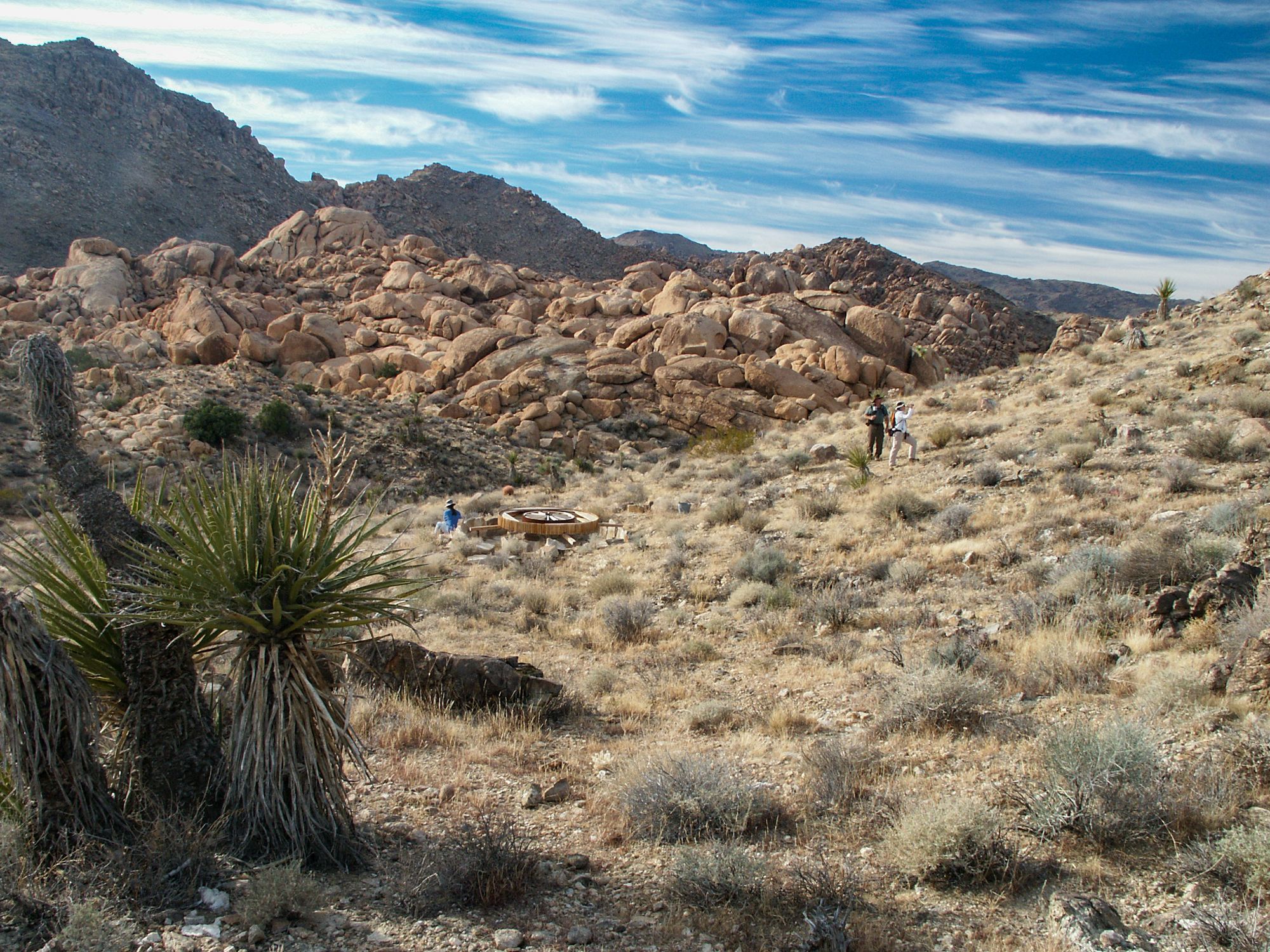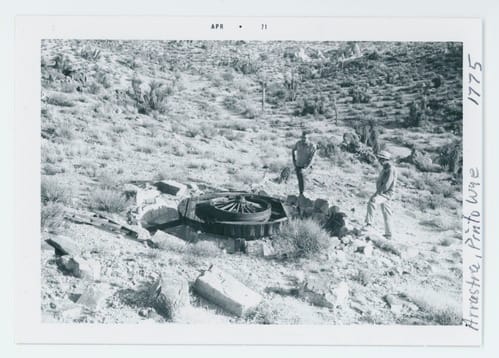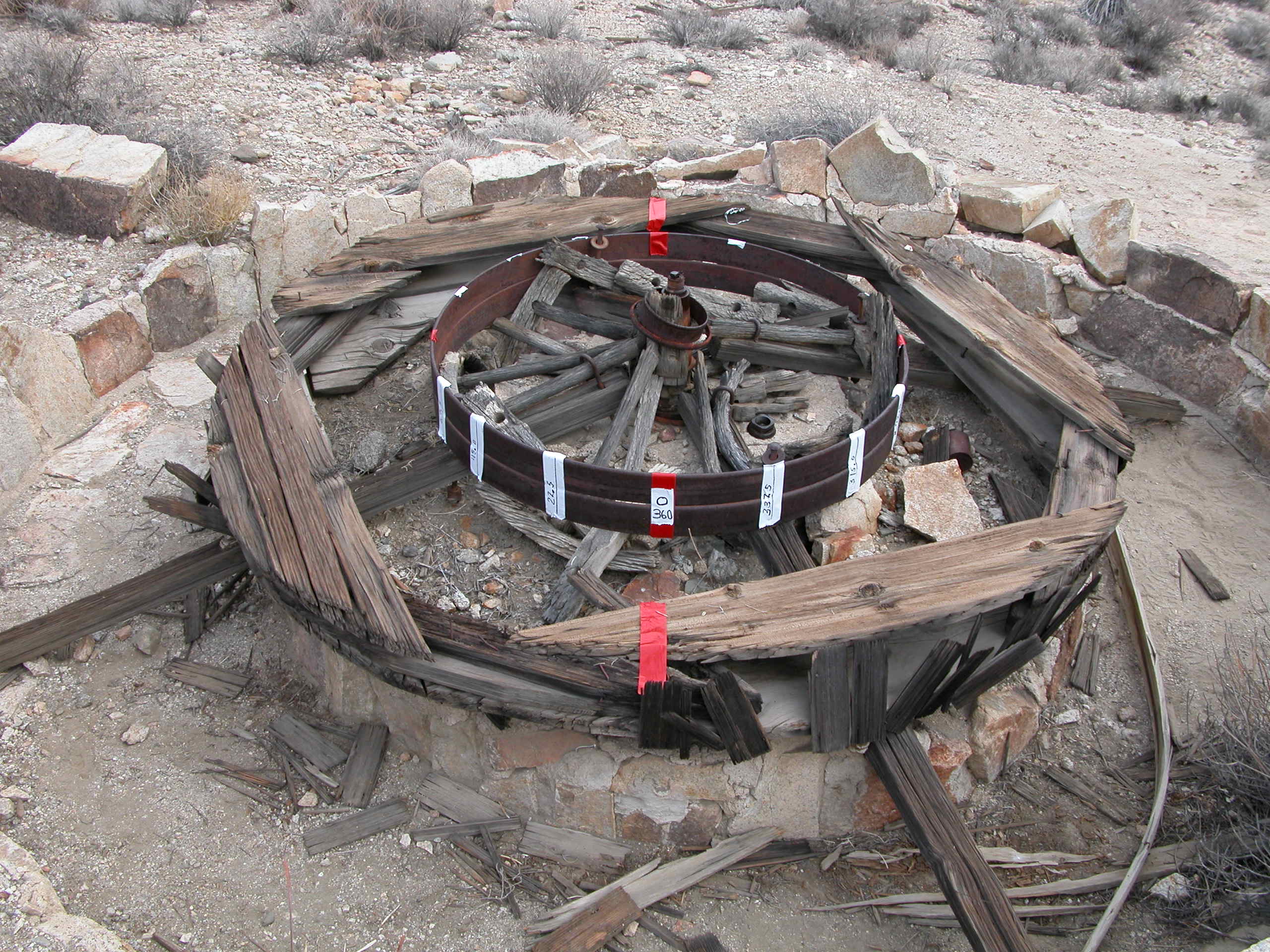An arrastra is a simple and primitive gold milling device. Heavy stones are dragged over gold ore to crush it. Mercury and water are added to the floor of the arrastra to create an amalgam and capture the gold.
There is some mystery about who built and used this arrastra. A small inclined shaft is up on the hillside above the arrastra, and a couple of prospects are in the area. The arrastra could have been built to mill ore from these prospects. Perhaps the ore played out too quickly, and the miners moved on before using the arrastra heavily.
It is also possible that this was a custom mill for other mines in the area. Or maybe it was centrally located to serve some of the other mines? One account suggests that Jim "Chuckwalla" Wilson (who discovered the El Dorado Mine) built this arrastra to serve local mines in 1903. (Also, see nearby John's Camp)
The location of the arrastra is also a bit of a mystery because there are no good water sources nearby. An arrastra is a thirsty device, and water would have had to be brought in for it to work.

The particular design of the arrastra is also rare because of the wagon wheel sitting on top. It is a "wagon wheel" arrastra, meaning that a wagon wheel is attached to the central axis to drive the drag stones. This type of arrangement is quite unusual, and very few, if any, are left in the wild. This is one of only two known examples of this type of arrastra remaining in the backcountry of a National Park. The other one is inside Lake Mead Recreation Area and is in worse condition.
Typically, arrastras were driven by walking a mule or horse around the perimeter. The wagon wheel design was to accommodate a belt for an engine, in this case, a four-horsepower International gasoline engine (long since removed), to power the arrastra. Having two wheels on the arrastra allowed for switching the rotation speed of the crushing stones. The larger wheel was probably added later to reduce the revolutions per minute and slow the crushing down to the desired speed.
The gasoline engine suggests a date after 1900 for the arrastra, but probably before the end of the Great Depression in the 1930s. The Monument was created in 1936, and no new mining claims would have been allowed after that date; work on existing claims could continue. So, it is likely the arrastra was built before then. The park service has restored this arrastra, and there is a small sign at the site explaining the workings of the arrastra.





